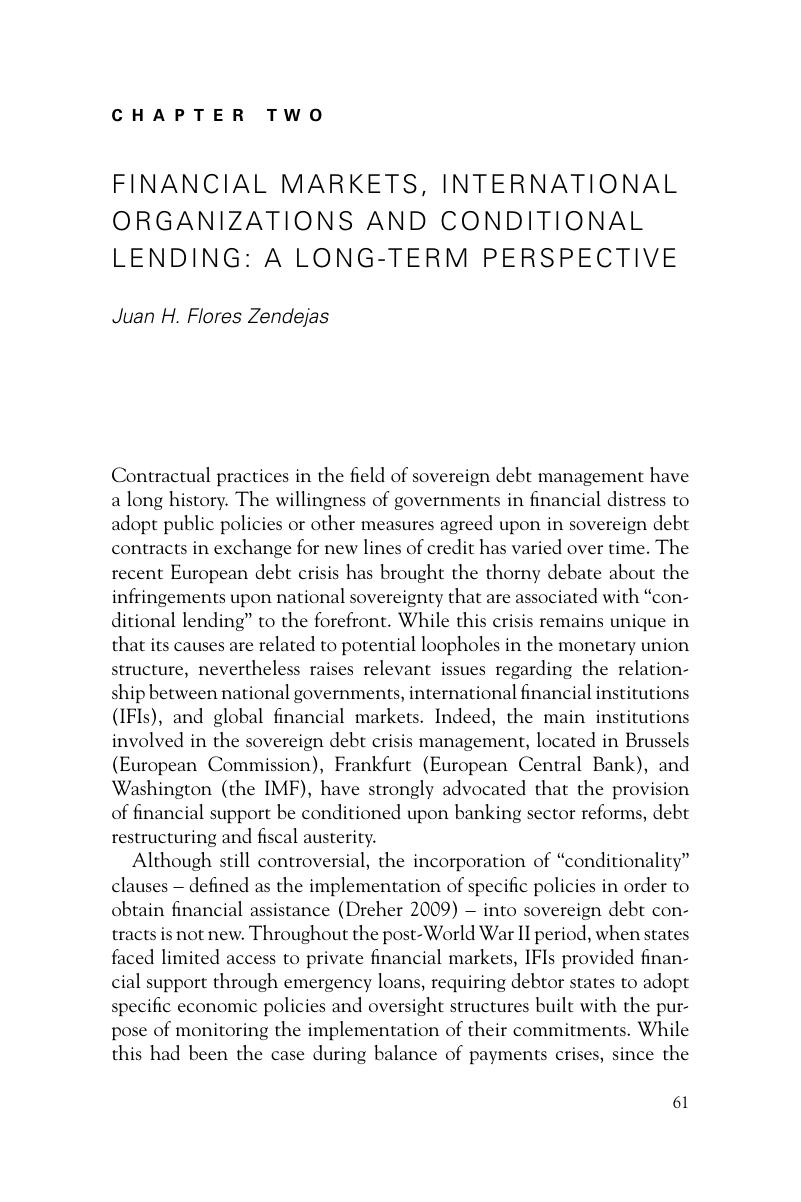Book contents
- Contractual Knowledge
- Cambridge Studies in Law and Society
- Contractual Knowledge
- Copyright page
- Contents
- Figures
- Tables
- Notes on contributors
- Book part
- Glossary
- Chapter One Contractual knowledge: One hundred years of legal experimentation in global markets
- Part One Contracts and sovereign debt obligations: The evolution of contractual provisions
- Chapter Two Financial markets, international organizations and conditional lending: A long-term perspective
- Chapter Three When governments write contracts: Policy and expertise in sovereign debt markets
- Chapter Four Market rules: Social conventions, legal fictions, and the organization of sovereign debt markets in the long twentieth century
- Part Two Consolidating international organizations: The mobilization of social capital and the standardization of interpretive processes
- Part Three Structuring fields: Market dominance, complementarity and differentiation in complex institutional ecologies
- Index
- Series page
- References
Chapter Two - Financial markets, international organizations and conditional lending: A long-term perspective
from Part One - Contracts and sovereign debt obligations: The evolution of contractual provisions
Published online by Cambridge University Press: 05 May 2016
- Contractual Knowledge
- Cambridge Studies in Law and Society
- Contractual Knowledge
- Copyright page
- Contents
- Figures
- Tables
- Notes on contributors
- Book part
- Glossary
- Chapter One Contractual knowledge: One hundred years of legal experimentation in global markets
- Part One Contracts and sovereign debt obligations: The evolution of contractual provisions
- Chapter Two Financial markets, international organizations and conditional lending: A long-term perspective
- Chapter Three When governments write contracts: Policy and expertise in sovereign debt markets
- Chapter Four Market rules: Social conventions, legal fictions, and the organization of sovereign debt markets in the long twentieth century
- Part Two Consolidating international organizations: The mobilization of social capital and the standardization of interpretive processes
- Part Three Structuring fields: Market dominance, complementarity and differentiation in complex institutional ecologies
- Index
- Series page
- References
Summary

- Type
- Chapter
- Information
- Contractual KnowledgeOne Hundred Years of Legal Experimentation in Global Markets, pp. 61 - 91Publisher: Cambridge University PressPrint publication year: 2016
References
- 3
- Cited by



